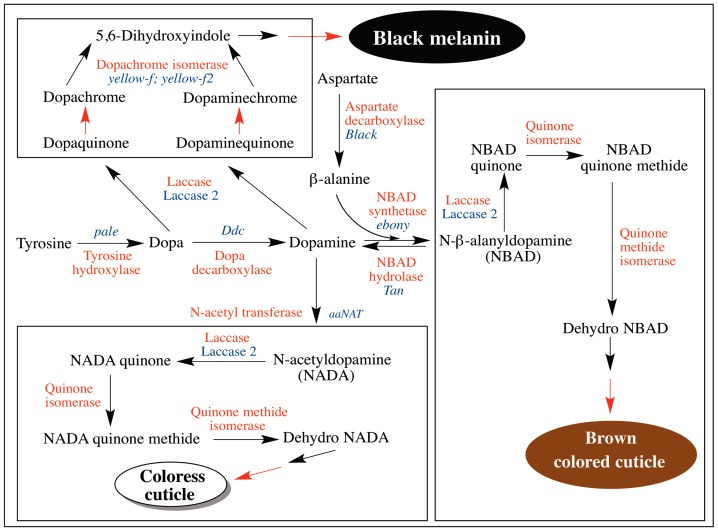Figure 13.
Genes associated with melanization and sclerotization processes in insect cuticle. Insect cuticular melanogenesis is intimately linked to cuticular sclerotization process, which makes the cuticle strong and hard by crosslinking cuticular proteins and chitin. Both processes start with the amino acid, tyrosine. Tyrosine hydroxylase converts tyrosine to dopa. Dopa decarboxylase generates dopamine from dopa. Both dopa and dopamine can serve as the precursor for melanin. Cuticular laccase seems to be responsible for melanization in cuticle by oxidizing these two catechols to quinones. Both these quinones after conversion to chromes serve as substrates for DCDT, which produce DHI as the product. Oxidative polymerization DHI makes the black colored melanin pigment in cuticle. Most importantly, dopamine is primarily converted to NBAD and NADA by the action of NBAD synthetase and N-acetyl transferase respectively. Oxidation of these catechols produces their quinones, which are acted on by quinone isomerase and quinone methide isomerase sequentially leading to the generation of dehydro compounds. Oxidative coupling of dehydro compounds along with the adduct formation by N-acyldopamine quinones and quinone methides account for sclerotization reactions. (Enzymes catalyzing various reactions are labeled in red. The genes associated with these enzymes are named in blue. Black arrow enzyme catalyzed reactions; red arrow nonenzymatic reactions).

